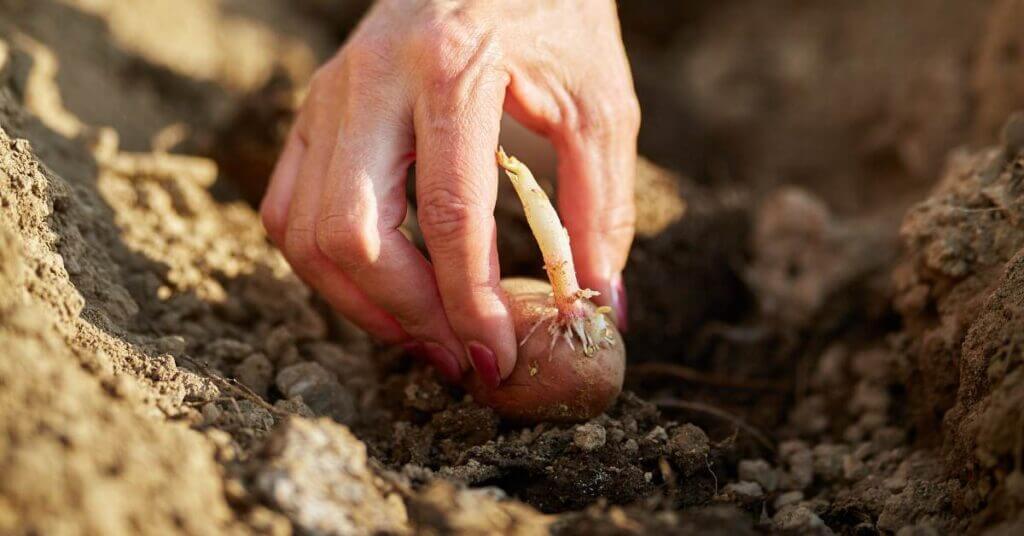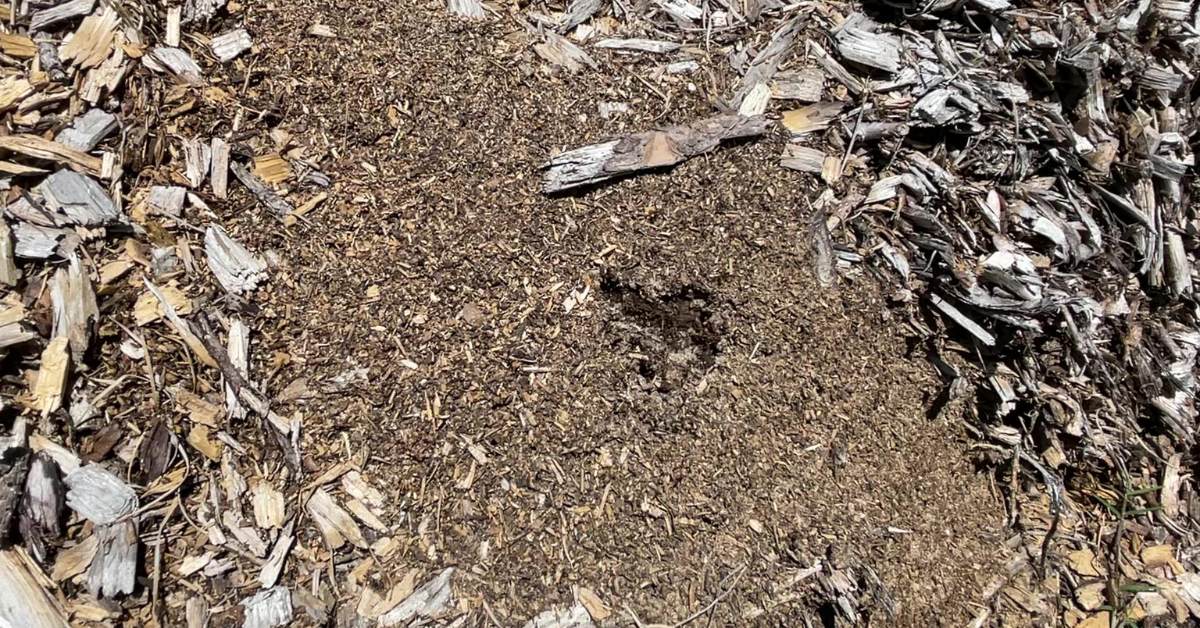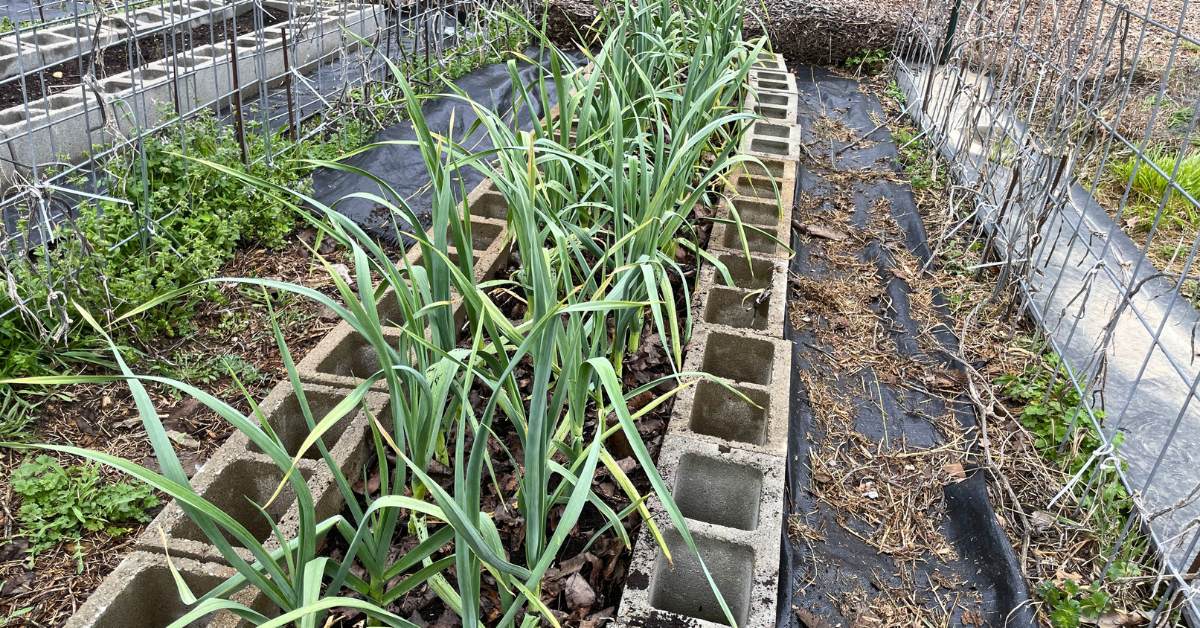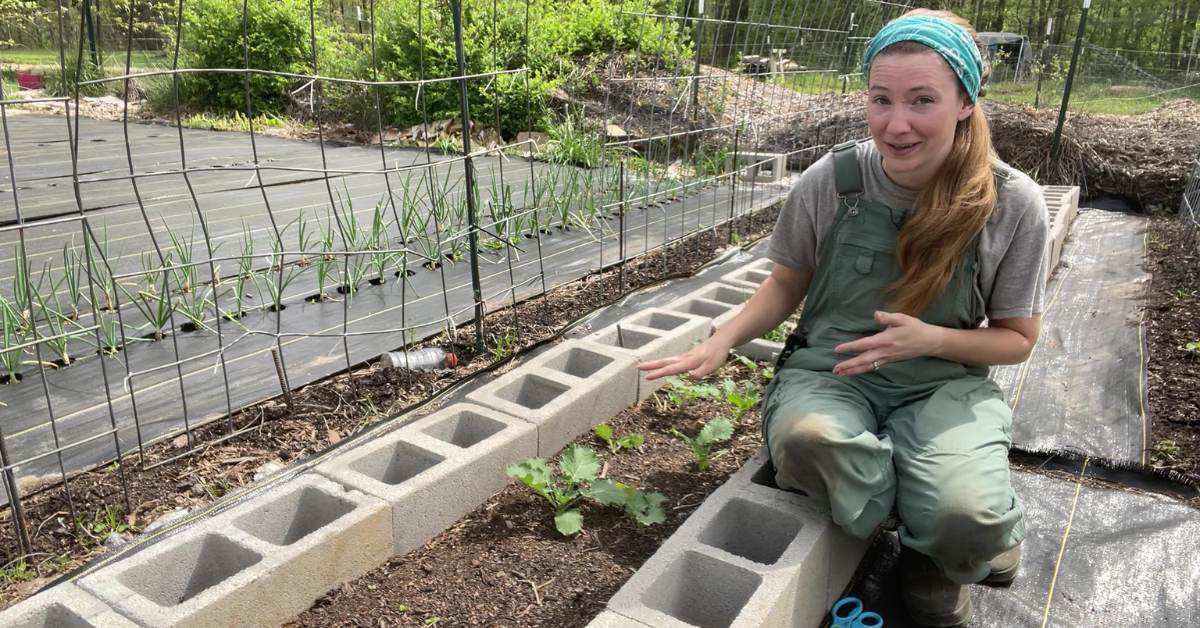Timing is everything when it comes to planting potatoes.
Knowing the optimal window for planting can mean the difference between a bumper crop and a disappointing harvest.
Today, we’ll discuss what you need to consider when determining when to plant potatoes and how to recognize when it’s too late to get started.
When to Plant Potatoes: 3 Considerations
Potatoes are not hard to grow by any means, but knowing a few potato facts can make it even easier.
So, before diving into the specifics of when to plant potatoes, we need to discuss a few key factors that impact the growth of potatoes.
Where you live, the potato variety you choose, and the potential threat of potato rot are all crucial considerations that should guide your planting decisions.
Let’s explore each of these factors in detail to ensure you make the most out of your potato-growing endeavors.
1. Where You Live
The timing for planting potatoes varies depending on your geographical location. Of course, different regions experience different climates and growing seasons, which directly influence the optimal timing for planting.
Understanding your local climate (and last frost date, even if it’s just a light frost) is the first step to determining when it’s the best time to plant potatoes in your area.
Whether you reside in a cooler northern climate or a warmer southern region, you’ll need to know when your soil is warm enough for planting.
2. The Potato Variety You’re Growing
Not all potato varieties have the same planting requirements or maturity dates.
Some varieties are better suited for early planting, while others thrive when planted later in the season.
Additionally, certain potato varieties are more tolerant of specific environmental conditions, such as heat or cold.
(My personal favorite is Yukon Gold. It seems to be a well-rounded potato that can take the heat and the cold. We tried red potatoes one year and were very disappointed.)
Before planting, research the characteristics of the potato variety you intend to grow to ensure you choose the best timing and best soil conditions for optimal yields. For the best results, choose a potato specifically suited to your area.
You’ll also want to decide if you want new potatoes (sometimes called “early potatoes”), which can be harvested much earlier than if you’re going for maincrop potatoes.
3. The Possibility of Potato Rot
Potato rot, caused by fungal pathogens, can pose a significant threat to your potato crop if not properly managed.
Factors such as soil moisture levels, temperature fluctuations, and improper storage conditions can increase the risk of potato rot.
If you live in an area that experiences frequent wet weather or has acidic soil, the risk of potato rot may be higher.
Additionally, planting potatoes in soil that lacks proper drainage can exacerbate the problem, as excess moisture around the tubers creates an ideal environment for fungal growth.
Furthermore, inadequate air circulation around the plants, particularly in densely planted areas or where foliage is allowed to become overly dense, can contribute to the development of rot.
This is especially true in regions prone to high humidity, where moisture buildup on the foliage provides a breeding ground for fungal pathogens.

Dream of Filling Your Pantry with Homegrown Staples?
Plan your garden with our FREE PRINTABLE—Staples Garden: What to Plant to Feed Your Family for a Year!
What Is the Best Month to Plant Potatoes?
This largely depends on the factors outlined previously—your location, the potato variety, and the risk of potato rot.
In general, the ideal time to plant potatoes is when the soil has warmed to around 45-55°F (7-13°C) and is workable, typically in early spring.
For many regions, this means planting potatoes in March or April, but it can vary based on your specific climate zone. In colder northern regions, planting may need to be delayed until later in the spring to avoid frost damage to young potato plants.
Conversely, in warmer southern regions, potatoes can often be planted earlier in the year.
Here in Zone 7b, I try to get potatoes in the ground around Valentine’s Day (February), but I also know plenty of people who plant their potatoes round St. Patrick’s Day (March).
Still others plant potatoes in late April.
Timing your potato planting really is region-specific.
What’s the Latest You Can Plant Potatoes?
While potatoes are typically planted in early spring for a summer or fall harvest, it’s possible to plant them later in the season for a winter or early spring harvest in some regions.
In general, the latest recommended planting date for potatoes is about 2-4 weeks before the last expected frost date in your area.
Planting too late can result in insufficient time for the potatoes to mature before the onset of cold weather, potentially leading to lower yields or frost damage to the tubers.
However, some potato varieties are specifically bred for late planting and can tolerate cool weather and short growing seasons.
If you missed the optimal planting window in spring, you may still have success planting certain late-season varieties in early summer for a fall harvest.
Keep in mind that planting potatoes too late in the season also increases the risk of encountering hot weather during tuber formation, which can negatively impact yield and quality.
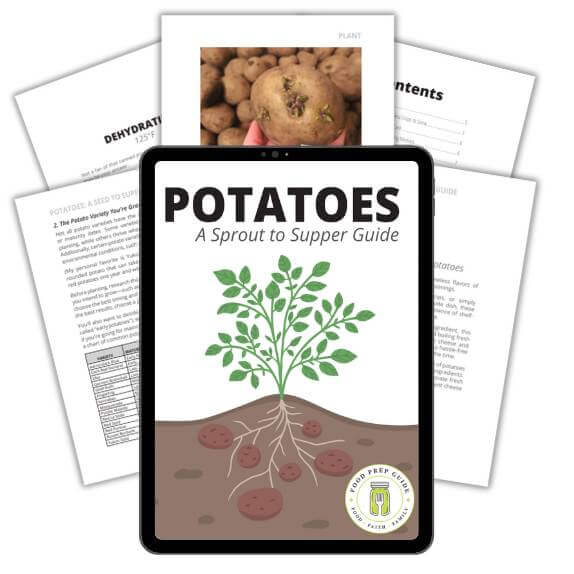
Master Potatoes From Seed to Table
Get growing & preserving faster with no-fluff tutorials for every step from plant to plate!
Can Potatoes Be Grown Year Round?
It’s possible to extend your growing season and enjoy a year-round potato supply with proper planning and techniques.
In regions with mild climates, such as some parts of the southern United States or Mediterranean countries, potatoes can be grown year-round.
By selecting appropriate potato varieties and providing protection from extreme temperatures, such as using mulch or row covers, you can continue planting and harvesting potatoes throughout the year.
Additionally, you can employ techniques such as succession planting, where you stagger planting dates to ensure a continuous harvest, and growing potatoes in containers or raised beds to control soil temperature and moisture levels.
However, in colder climates with freezing winters, growing potatoes year-round outdoors may not be feasible without the use of heated structures or specialized growing methods.
Nonetheless, you can still enjoy fresh potatoes year-round by storing harvested tubers in a cool, dark, and well-ventilated environment to prolong their shelf life.
Ultimately, whether you can grow potatoes year-round depends on your local climate, available growing space, and willingness to implement season-extending techniques.
With proper planning and care, you can enjoy a steady supply of homegrown potatoes throughout the year.
Quick Tips for Planting Potatoes
- Choose the Right Seed Potatoes: Select certified seed potatoes from reputable sources to ensure disease-free and high-quality tubers for planting.
- Prepare the Soil: Ensure the soil is well-drained, loose, and rich in organic matter. Avoid planting potatoes in compacted or waterlogged soil, as it can hinder tuber development.
- Plant at the Right Depth: Plant seed potatoes about 3-4 inches deep and space them 12-15 inches apart in rows. Proper spacing allows for adequate tuber development and airflow, reducing the risk of disease.
- Hill the Soil: As potato plants grow, gradually mound soil around the base of the plants to cover the lower stems. This promotes the development of additional potato tubers and protects them from sunlight, preventing greening.
Get our complete guide to growing potatoes from potatoes here.
Whether you’re starting from seed pieces or experimenting with grocery store potatoes, the key to your success will be planting at the right time.
Regardless of when you plant your potatoes, be sure to provide well-drained soil, full sun, and proper spacing in your garden bed or rows.
For most regions, planting will start early, shortly after the ground thaws at the end of winter or early spring.
Planting small tubers at the correct depth, typically a few inches below the soil surface, and ensuring loose soil for easy tuber development are essential steps in the process.
While potatoes don’t require much water (only a couple of inches of water per week), you’ll want to maintain consistent moisture levels, particularly during the crucial early stages of growth.
As you embark on your potato-growing journey, remember that success lies in attention to detail and careful planning.


